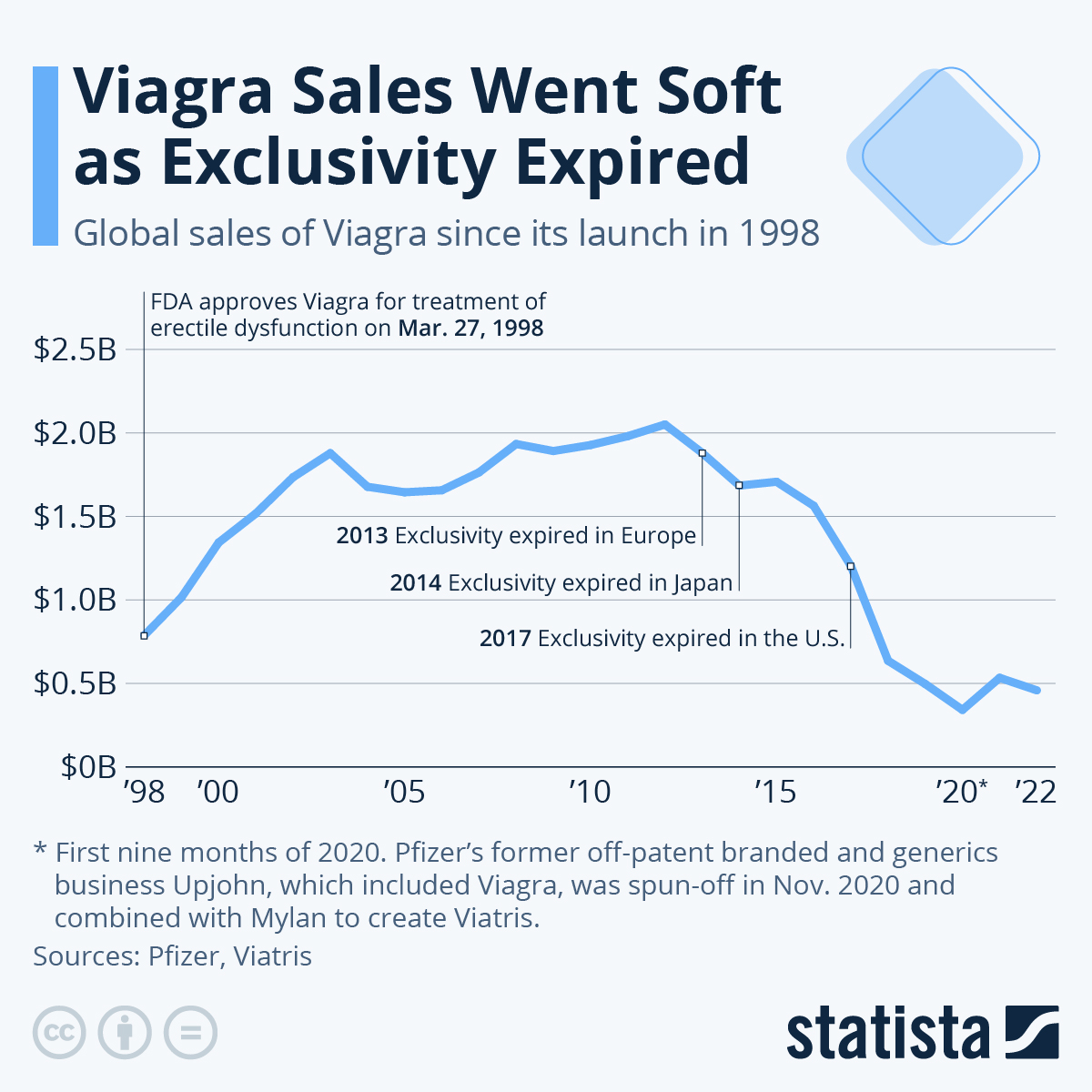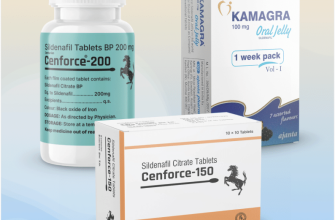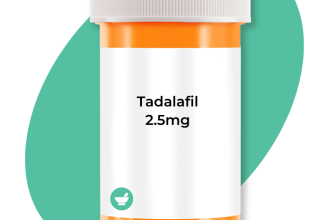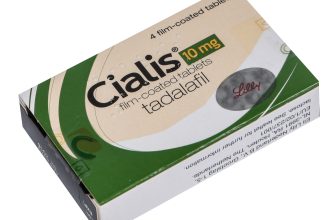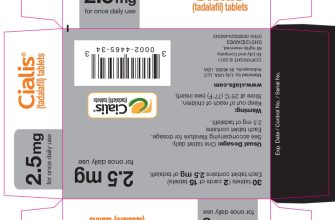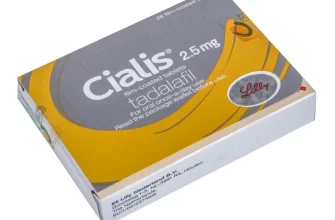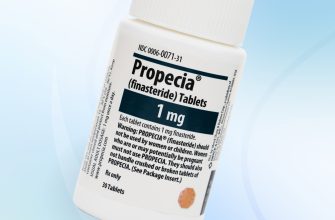Need quick insights into Viagra sales in the US? Sales figures for Viagra (sildenafil citrate) consistently rank among the highest for prescription drugs. In 2022, brand-name Viagra generated over $1 billion in revenue, a testament to its ongoing market dominance and sustained demand.
This strong performance reflects consistent patient demand and effective marketing strategies. Pfizer, the manufacturer, maintains a strong presence, though generic versions significantly impact overall market share. Generic sildenafil accounts for a substantial portion of the overall sales volume, making it a highly competitive and accessible medication. The price difference between brand-name and generic options fuels competition and ultimately benefits consumers.
Several factors contribute to the sustained demand. These include the increasing prevalence of erectile dysfunction (ED) among men, coupled with greater awareness and reduced stigma surrounding ED treatment. Direct-to-consumer advertising, while controversial, plays a considerable role in driving awareness and patient engagement. Analyzing sales data, alongside the prevalence rates of ED, provides a clearer understanding of market trends and future projections.
Note: This information is for general knowledge. Consult your doctor or pharmacist for personalized medical advice and accurate prescription information. Always rely on verified sources for health-related data and decisions.
- Viagra Sales in the USA: A Detailed Overview
- Prescription Trends and Market Share
- Pricing and Affordability of Viagra
- Regulation and Safety Concerns Regarding Viagra
- Potential Side Effects and Interactions
- Counterfeit Viagra: A Serious Threat
- Safe Usage Guidelines
- The Impact of Direct-to-Consumer Advertising on Viagra Sales
- Increased Awareness and Demand
- Competition and Market Expansion
- Shifting Marketing Strategies
- Long-Term Effects
- Future Trends
- Data Considerations
Viagra Sales in the USA: A Detailed Overview
Pfizer’s Viagra, the first FDA-approved oral treatment for erectile dysfunction, consistently commands a significant share of the US market. Annual sales fluctuate, influenced by factors like generic competition and pricing strategies. Data from IQVIA suggests peak sales exceeding $2 billion annually in the early 2000s, subsequently declining due to the introduction of cheaper generic alternatives.
Generic versions of sildenafil citrate (Viagra’s active ingredient) significantly impacted Pfizer’s profits. The patent expiration opened the door for numerous companies to produce and sell their own versions, creating intense price competition. This led to a substantial drop in Viagra’s market share, although Pfizer maintains a presence with its brand-name product.
Direct-to-consumer advertising plays a key role in driving sales. Pfizer’s marketing campaigns have historically focused on increasing awareness and normalizing conversations about erectile dysfunction. This strategy helped establish Viagra as a household name and a popular treatment option.
Sales figures are influenced by several factors beyond competition and advertising. These include changes in healthcare policies, patient demographics, and evolving treatment preferences. Monitoring these factors provides valuable insight into future market trends.
Precise, up-to-the-minute sales data is proprietary information held by Pfizer and market research firms. Publicly available information often lags, providing a general picture rather than granular details. Accessing comprehensive and current sales figures often requires specialized subscriptions to market research databases.
In conclusion, while exact sales figures remain partially obscured, the trajectory of Viagra sales in the USA clearly demonstrates the influence of generic competition and the enduring impact of effective marketing strategies in the pharmaceutical sector.
Prescription Trends and Market Share
Viagra’s market dominance faces challenges from newer entrants. Generic sildenafil’s arrival significantly impacted sales.
- Brand Viagra maintains a strong presence, but its market share declined after patent expiry.
- Generic competition drove down prices, increasing accessibility but reducing revenue for brand-name manufacturers.
- Sales data indicates a gradual shift towards online pharmacies, impacting traditional retail channels.
Analyzing prescription data reveals key trends:
- Growth in prescriptions for erectile dysfunction (ED) medications plateaued recently, potentially due to increased awareness and treatment options.
- Age demographics play a significant role. The highest prescription rates remain within the 50-70 age bracket, with a gradual increase in younger patient numbers.
- Marketing campaigns focused on improved patient education and access to care have shown moderate success in increasing prescription rates.
Market share projections suggest continued competition among brand and generic medications. Innovative ED treatments may influence future market dynamics. This necessitates proactive strategies to maintain market leadership for brand Viagra and capitalize on emerging opportunities.
- Focusing on direct-to-consumer marketing to emphasize brand quality is crucial.
- Strategic partnerships with healthcare providers can enhance access and prescription rates.
- Research and development of next-generation ED therapies will define long-term market position.
Pricing and Affordability of Viagra
Viagra’s cost varies significantly depending on dosage, pharmacy, and insurance coverage. Generic sildenafil, the active ingredient in Viagra, is considerably cheaper than brand-name Viagra. Expect to pay anywhere from $20 to $80 per pill for brand-name Viagra without insurance, while generic sildenafil typically costs between $1 and $20 per pill. This large price range reflects differences in pharmacy pricing strategies and potential discounts.
Many insurance plans cover Viagra or generic sildenafil, but coverage depends on your specific plan and whether your doctor deems it medically necessary. Check with your insurance provider to understand your coverage and potential out-of-pocket costs. Consider exploring manufacturer coupons or patient assistance programs; these can significantly reduce the price. Many pharmacies offer discount programs or utilize prescription savings apps, so comparing prices across different pharmacies before purchasing is always advisable.
Tips for saving money on Viagra:
- Consider generic sildenafil: It offers the same active ingredient at a lower price.
- Shop around: Compare prices at different pharmacies, both online and in person.
- Utilize manufacturer coupons: Check for available coupons from Pfizer or other manufacturers.
- Explore patient assistance programs: These programs can help reduce the cost for individuals with limited income.
- Talk to your doctor: Discuss alternative treatments or options that might be more affordable.
Remember to always obtain prescriptions from a licensed healthcare professional. Never purchase medication from unauthorized online vendors. Prioritizing your health while managing costs requires careful consideration of your options.
Regulation and Safety Concerns Regarding Viagra
Viagra, or sildenafil citrate, requires a prescription in the USA. The Food and Drug Administration (FDA) rigorously regulates its manufacturing, distribution, and marketing to ensure quality and safety. This means you must consult a doctor before using it.
Potential Side Effects and Interactions
Common side effects include headache, flushing, nasal congestion, and upset stomach. More serious, though rare, side effects include vision changes, hearing loss, and heart problems. Viagra interacts with certain medications, notably nitrates used to treat heart conditions. Always inform your doctor about all medications you take, including over-the-counter drugs and supplements.
Counterfeit Viagra: A Serious Threat
Counterfeit Viagra poses a significant risk. These pills may contain incorrect dosages of sildenafil or dangerous contaminants. Purchasing Viagra from unregulated online pharmacies or other unauthorized sources is strongly discouraged. Only obtain Viagra from legitimate pharmacies with valid prescriptions.
Safe Usage Guidelines
Follow your doctor’s instructions carefully regarding dosage and frequency. Do not exceed the recommended dose. If you experience any concerning side effects, stop taking Viagra and contact your doctor immediately. Discuss your medical history, including any heart conditions or other health concerns, with your physician before starting Viagra.
The Impact of Direct-to-Consumer Advertising on Viagra Sales
Direct-to-consumer (DTC) advertising significantly boosted Viagra sales. Studies show a clear correlation between increased ad spend and higher prescription rates. Pfizer, the original manufacturer, pioneered this approach, leading to a massive surge in market share and brand recognition.
Increased Awareness and Demand
DTC advertising successfully educated men about erectile dysfunction (ED) and its treatable nature. This increased awareness normalized seeking help for ED, driving more men to consult their doctors, resulting in a substantial increase in Viagra prescriptions. One study showed a 25% increase in ED consultations following a targeted DTC campaign.
Competition and Market Expansion
The success of Pfizer’s DTC strategy spurred competition. Generic Viagra’s entry to the market further intensified advertising, expanding the overall market for ED medications. This competitive environment drove down prices and increased accessibility, broadening the potential customer base.
Shifting Marketing Strategies
While initial campaigns focused on broad reach, more recent strategies utilize targeted advertising. Digital channels now allow for highly specific audience targeting, maximizing return on investment. These refined approaches have improved conversion rates and cost efficiency.
Long-Term Effects
The long-term impact includes a more open dialogue about ED and a greater acceptance of seeking treatment. This is a valuable public health outcome, even beyond the financial success of the medication itself. The data indicates a lasting shift in attitudes, fostering a more proactive approach to men’s health.
Future Trends
Future DTC advertising for ED medications will likely focus even more on digital platforms and personalized messaging. We expect to see increasing use of telehealth platforms and tailored campaigns that address specific patient needs and concerns.
Data Considerations
Note: Precise sales figures are often confidential due to business strategies and competitive factors. Available data primarily focuses on trends and general market performance rather than precise sales figures for individual periods. Any conclusions about sales figures must therefore be drawn carefully from available trends and overall market observations.

